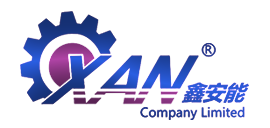
Failure cause analysis: a. Line failure; b. Voltage drop; C. Contactor failure; d. Continuous operation within 1.5 seconds.
Treatment methods: Check the circuit; check the voltage; check overloaded electrical appliances; reduce the number of operations.
Failure cause analysis: Due to overloading, over-length or the conveyor belt being blocked, the running resistance increases and the motor is overloaded; due to poor lubrication conditions of the transmission system, the motor power increases; accumulation in the motor fan air inlet or radial heat sink dust, worsening the heat dissipation conditions.
Treatment method: measure the power of the motor, find out the cause of overload operation, and deal with the problem; replenish lubrication of each transmission part in time; remove dust.

Analysis of the cause of the failure: Insufficient oil in the hydraulic coupling.
Treatment method: refuel (when driven by dual motors, the two motors must be measured with an ammeter. Make the power consistent by investigating the oil filling amount.)
Failure cause analysis: too much or too little oil in the reducer; the oil has been used for too long; the lubrication conditions have deteriorated, causing damage to the bearings.
Treatment method: Inject oil according to the specified amount; clean the inside, change oil in time, repair or replace bearings, and improve lubrication conditions.
Failure cause analysis: The frame and rollers are not adjusted straight; the axis of the roller is not perpendicular to the center line of the conveyor belt; the joint of the conveyor belt is not perpendicular to the center line, and the edge of the conveyor belt is S-shaped; the loading point is not in the center of the conveyor belt (unbalanced load) .
Treatment method: Adjust the frame or drum to keep it straight; use the roller to adjust the position to correct the deviation of the conveyor belt; re-make the joint to ensure that the joint is perpendicular to the center of the conveyor belt; adjust the position of the coal dropping point.
Failure cause analysis: The conveyor belt rubs against the frame, resulting in belt edge fuzzing and cracking; the conveyor belt interferes with fixed hard objects to cause tearing; poor storage and excessive tension; the laying is too short and the number of deflections exceeds the limit, resulting in premature aging.
Treatment method: Make timely adjustments to avoid long-term deviation of the conveyor belt; prevent the conveyor belt from hanging on fixed components or falling into metal structural parts in the conveyor belt; store according to the conveyor belt storage requirements; try to avoid short-distance laying and use.
Failure cause analysis: The material of the belt body is not suitable and becomes hard and brittle when exposed to water or cold; the strength of the conveyor belt has deteriorated after long-term use; the quality of the conveyor belt joints is poor, and local cracks have not been repaired or re-done in time.
Treatment method: Use materials with stable mechanical and physical properties to make the belt core; replace damaged or aging conveyor belts in a timely manner; observe the joints frequently and deal with problems in a timely manner if found.
Failure cause analysis: The conveyor belt has insufficient tension and the load is too large; the friction coefficient between the transmission roller and the conveyor belt is reduced due to water spray; it exceeds the use range and is transported downwards.
Treatment method: Readjust the tension or reduce the transportation volume; eliminate water spraying and increase the tension; frequently observe the joints and deal with problems in a timely manner.
TradeManager
Skype
VKontakte